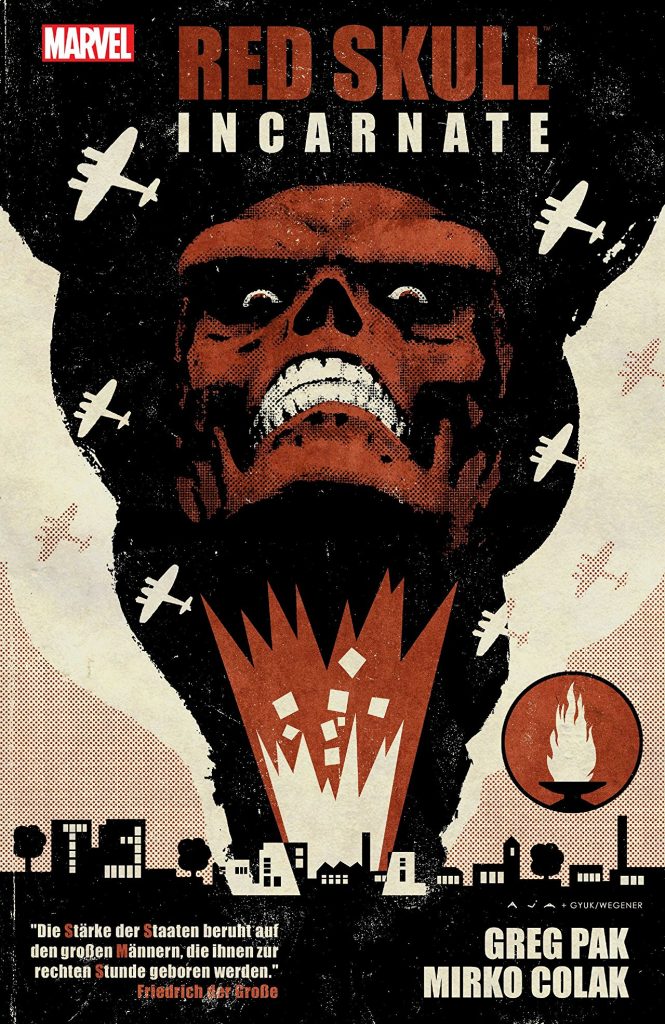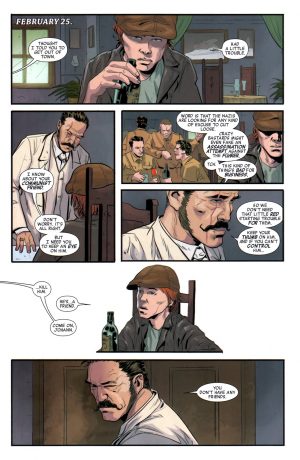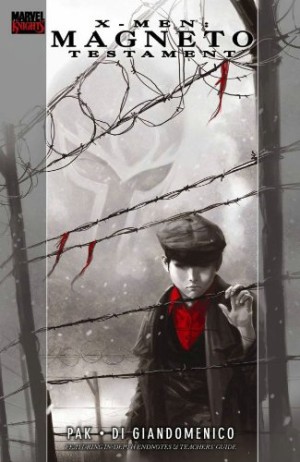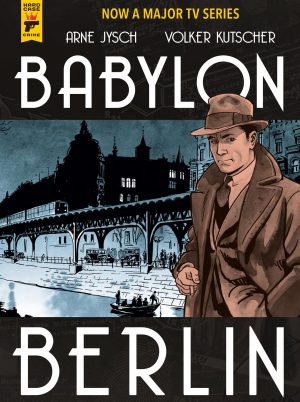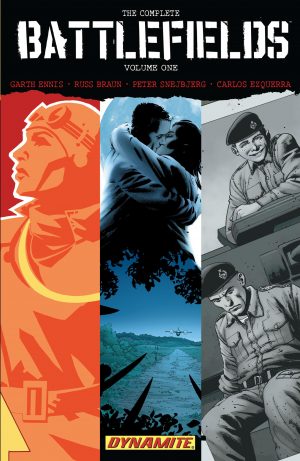Review by Karl Verhoven
Hitler’s abortive Munich Beer Hall Putsch of 1923 is a pretty heavy duty place to start the Red Skull’s story, but then more so than any other Marvel character he’s intimately associated with the Nazis of the 1930s and 1940s. Created by Jack Kirby and Joe Simon during the 1940s when the USA was actually at war with the Nazis, when revived in the 1960s World War II was fresh enough in adult minds to justify a Nazi villain. As time has moved onward, the whole concept of the Red Skull, his associated iconography, and what he represents has become ever more troublesome. Groups under other names holding Nazi views exist in most Western nations, however marginalised they may be, and the caricature the Red Skull once was has become a personality with some depth, and distanced from bigots. His aim of global domination is now more associated with Hydra and other stand-in groups, with the Nazi past rarely referenced. Is it a good idea, then, to reconnect him to it via a look at his youth, the circumstances that transformed Johan Schmidt into the Red Skull?
It’s a core question, because no matter how sensitively Greg Pak and Mirko Colak handle the circumstances, what they’re doing is defining a villain who once embodied Nazis in comics, and reinforcing those origins. It’s straddling a very fine line. An alternative interpretation could be that Pak and Colak are delivering a warning from history, personifying it via the experiences of the boy Schmidt surviving through a turbulent eleven years from 1923 to 1933. The creators are good, and this is no trivial exploitation. They throw the young Schmidt into horrific events that brutalise and desensitise him while making no bones about who the villains are. Pak’s historical research is thorough, and he convincingly sets up the real world conflict between Nazis and Communists that eventually sealed Hitler’s rise to power. This is accompanied by Colak’s frightening depictions of thuggish brownshirts on the march, their lack of regard for life, and their demonising of Germany’s Jewish population. The orphaned Schmidt grows up amid the turmoil, his own survival his priority with no feeling for any political ideology.
Pak’s thorough grounding of Schmidt’s upbringing in real life events tallies with his self-preservation, and when it becomes clear history is with the Nazis he joins them. We don’t actually see how he becomes the Red Skull physically, but Pak certainly reveals his inner personality as opportunistic, manipulative and sociopathic, all traits that will later serve him well. More subtly revealed is an ability as a motivator and to have people look up to him. He’s portrayed as an inspiration to a former orphanage inmate who tells Schmidt “You were the first person I ever met who looked the thugs in the eye and said no”.
If we have to have the Red Skull reinforced as the arch-Nazi, Pak and Colak do so to high standards, but the fundamental question remains of whether or not it’s a good idea in the first place.
